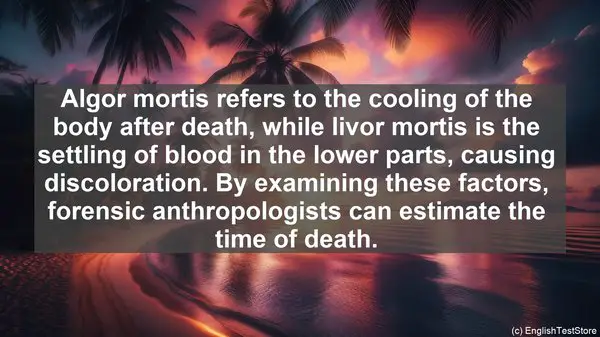Introduction
Today, we’re diving into the fascinating world of forensic anthropology. But before we begin, let’s address a common challenge: confusing words. In this lesson, we’ll clarify the meanings of ten frequently misunderstood terms. So, let’s get started!
1. Osteology vs. Odontology
Osteology refers to the study of bones, while odontology focuses on teeth. Both are crucial in forensic anthropology, but they have distinct roles. Osteology helps determine age, sex, and ancestry, while odontology aids in identifying individuals through dental records.
2. Antemortem vs. Postmortem
Antemortem refers to events or conditions occurring before death, while postmortem relates to those after death. Differentiating between the two is vital for establishing a timeline and understanding the circumstances surrounding a case.
3. Epiphysis vs. Diaphysis
When examining long bones, such as the femur, it’s essential to distinguish between the epiphysis and diaphysis. The epiphysis refers to the rounded ends, while the diaphysis is the shaft. This differentiation aids in age estimation.
4. Taphonomy vs. Entomology
Taphonomy involves the study of how organisms decompose and become fossilized, while entomology focuses on insects’ role in forensic investigations. Both provide valuable insights into the postmortem interval, or time since death.
5. Algor Mortis vs. Livor Mortis
Algor mortis refers to the cooling of the body after death, while livor mortis is the settling of blood in the lower parts, causing discoloration. By examining these factors, forensic anthropologists can estimate the time of death.
6. Forensic Anthropology vs. Archaeology
While both disciplines involve the study of human remains, forensic anthropology focuses on legal investigations, while archaeology examines past cultures. The goals and methodologies of these fields differ significantly.
7. Cranial vs. Postcranial
Cranial pertains to the skull, while postcranial refers to the rest of the skeleton. Each section provides unique information, with the cranial region often offering insights into an individual’s identity.
8. Ossification vs. Remodeling
Ossification is the process of bone formation, while remodeling refers to the continuous reshaping of bones throughout life. Understanding these processes is crucial for age estimation, as bone development varies at different stages.
9. Isotope vs. DNA Analysis
Isotope analysis involves studying the chemical composition of bones and teeth, providing information about an individual’s diet and geographic origin. DNA analysis, on the other hand, focuses on genetic identification, offering a more precise means of individualization.

10. Facial Reconstruction vs. Superimposition
Facial reconstruction aims to recreate an individual’s appearance based on skeletal remains, while superimposition involves overlaying an image of the deceased onto a photograph of a potential match. Both methods aid in identification, but they have different applications and limitations.

